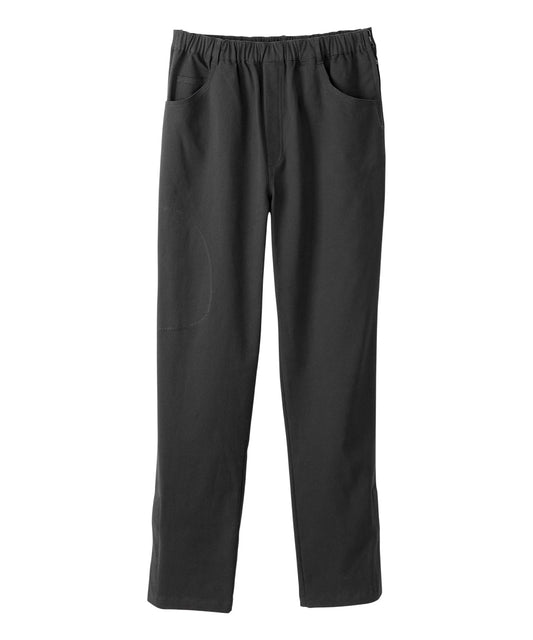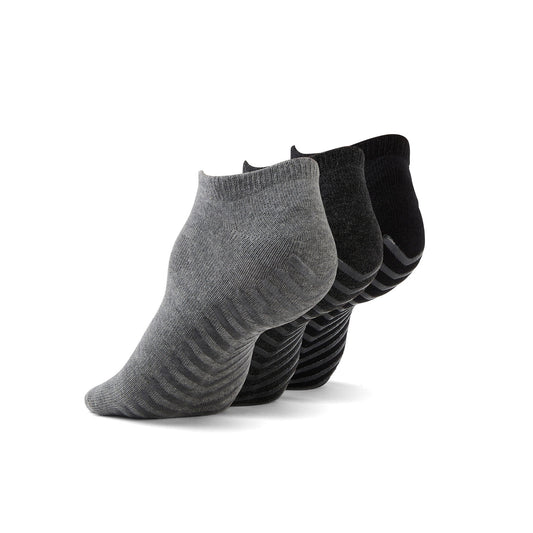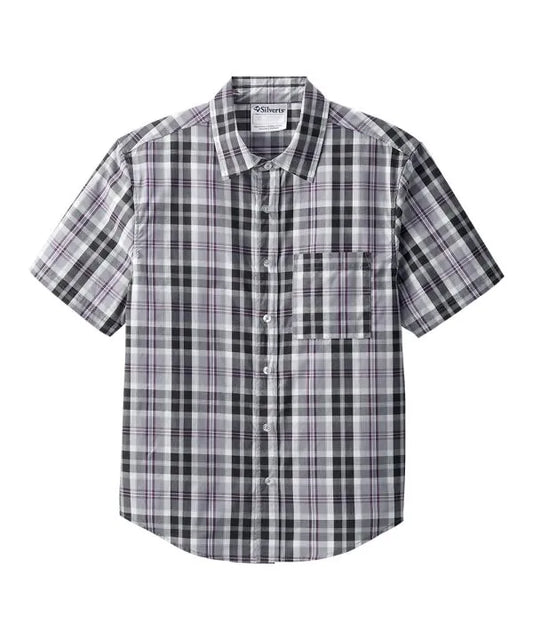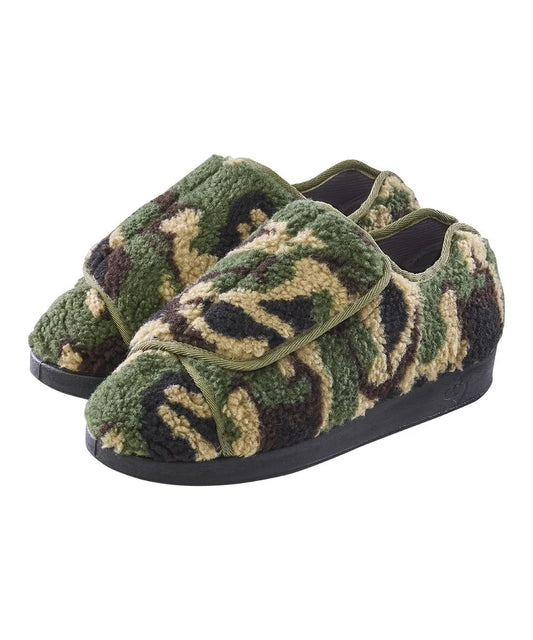Written by: Shreeya Shah
When the renowned surgeon Ellis Grey from Grey’s Anatomy was diagnosed with Alzheimer's, fans witnessed the emotional toll it took on her daughter, Meredith, and the entire medical community around them. This emotional story arc poignantly captured how the slow loss of memory stripped away identity and independence in layers of time. One of the most underestimated and very human parts of that journey is getting dressed; a daily habit that can soon become daunting for those with Alzheimer’s or dementia.
Luckily, companies like June Adaptive are helping to break the endless cycle of loss. Their mission is "...beyond fashion; it's about creating accessible and thoughtful apparel intended on preserving dignity and independence." Here, I will break down the specifics of what you are looking for in Alzheimer’s and dementia-friendly clothing, along with tips for caregivers, as well as product recommendations that work!
Key Features For Memory Care Apparel
When selecting clothing for a person experiencing Alzheimer’s or other forms of dementia, attention must be paid to balancing function with familiarity. The attire should be soft against the skin; choose breathable materials, such as cotton or bamboo, which may be preferable because many individuals with a decline in cognitive ability experience hypersensitivity. Tagless shirts or garments with flat seams will also prevent irritation that can cause agitation or confusion. Clear indicators of direction, such as front-facing tags or visual indicators of seams, assist a person in putting on the item of clothing, and some of the confusion and frustration in dressing may be alleviated through familiarity and direction.
Familiarity can assist in comfort as well. Since many of these individuals are living with many changes, a familiar wardrobe can provide a sense of stability in changing situations. Choose objects that appear similar to what they often wear, a cozy cardigan or a simple polo shirt may serve these preferences. Your goal is to create a routine and function to eliminate confusion. Another consideration is layering. Easy layered wear, such as shawls or a zip-up jacket, may also assist someone in transitioning throughout spaces without the burden of layering clothing procedures.
June Adaptive's Women’s Magnetic Zipper Active Jacket meets these ideals. It appears to be regular activewear, but it has been designed thoughtfully to include a magnetic zipper and soft, stretchable fabric; ideal for wearers with cognitive or physical disabilities.

Best Adaptive Closures For Cognitive Decline
Zippers and buttons often require fine motor skills and a bit of patience that many people with dementia may no longer have. That's why adaptive closures are so helpful. Magnetic closures, for example, allow users or caregivers to simply snap garments into place without the need to unbutton or zip up. Velcro is also a terrific alternative, especially in pants or shoes, but some individuals have sensitivities to either the texture or noise of Velcro.
Elastic waistbands can even provide a less obvious solution in pants and skirts, allowing users to put their clothing on and take it off without fasteners. They can also make bathroom breaks quicker, easier and less stressful. Likewise, side or full open tops can allow for easier dressing from seated or lying-down positions, perfect for patients who rely on caregivers.
The Men's Sherpa-lined Jacket with Magnetic Closures from June Adaptive is a great example of form following function. It looks like a regular jacket, but it has magnetic fasteners to make dressing easier. The jacket is warm and easy to put on, which preserves both dignity and safety.

How To Reduce Dressing Resistance In Dementia Patients
The act of getting dressed can be a battleground when cognitive changes lead to resistance, frustration, or anxiety. However, there are simple modifications to routine and expectations that can make this day-to-day task easier for everyone involved in the situation.
In general, it helps to have things consistent. Settling into a routine of getting dressed at the same time and in the same place every day means that getting dressed is less unpredictable. It reduces extraneous stimuli. It builds trust over time. Having options is also important. Having a full closet can lead to the possibility of overwhelm, but if your loved one only has to choose between two outfits, not only do they have the autonomy to make a choice, but they are also feeling viewed as an individual who is respected.
Patience and language are also important. Speak softly. Use short sentences. Explain each step of getting dressed without rushing through the process. Keeping clothing as familiar as possible is also helpful. Clothes washed or purchased stayed essentially the same for many years, so while it may not be familiar now, it gives way to positive associations. A person may think they are wearing a red t-shirt when they aren’t, or remember clothes that are packed away, even the scents of detergent they used for many years.
Including comfort items or calming things can also help. If music from their past is played or a favourite soft item, such as a blanket, is nearby, it may soothe them while getting dressed. Potential clothing items like the Unisex Ultra-Soft Anti-Slip Crew Socks from June Adaptive can help make dressing less overwhelming. These socks are comfortable, safe to walk in on slippery floors, and are easy to get on without any discomfort.

Alzheimer’s Clothing from June Adaptive
June Adaptive is a leader in inclusive and dementia-friendly clothing options, with its focus on dignity and usability in apparel. From shoes that slip on with ease to shirts that snap together with invisible magnets - everything was designed with real-life caregiving as the flow of the day can often rearrange and change our plans without notice. Each of the collections offers adaptive wear that is essential for caregiving and provides comfort, safety, and confidence for caregivers and individuals with Alzheimer's or dementia.
All of the items at June Adaptive are curated to facilitate ease of dressing while enabling an experience that feels like normalcy and clothing. This includes the active jacket, magnetic shirts, adaptive trousers, and other items, and accessories like socks that don't slip. June Adaptive has a variety of clothing items for all levels of cognitive and physical ability.
June Adaptive is different as they provide adaptable and functional clothing that is still fashionable, accessible, and adaptable while allowing the individual wearing it to feel empowered. The garments support daily flow with dressing and preserve core identity. These impacts are especially significant for caregivers in memory care. All of the considered design of their clothing makes for a user-fulfilling task.
Caregiver Tips For Stress-Free Dressing
Helping someone dress means you need to take a gentler, yet astute, approach. Lay out clothing the night before, picking simple, comfortable pieces of clothing that can be put on without layers of complex directions. Reducing decision-making in the moment reduces anxiety for people with dementia.
Labelling weekly outfits or colour coding hangers provides added structure. It simplifies what is worn and provides continuity in time and day structure. Think about mirrors. Some people do not see themselves in the mirror and can get confused or scared by their reflection. If this is the case for the person you are helping, it might be best to cover or remove mirrors from the dressing space.
Also, having a clear difference between clothes for daytime and nighttime wear helps maintain a clearer representation of routines. Pyjamas should be different than daywear to emphasize cues for the time of day. It is also best when the person can participate to the maximum ability, even if that is only pulling up a sleeve, choosing a scarf or closing a magnetic tab. This is not just about getting dressed; it is about the person's ability to have agency and be engaged.
Dressing a person living with dementia is an emotional act. It demonstrates care, love, and patience. Each step provides an opportunity to validate their worth.
Final Thoughts: Style Meets Dignity
When you consider clothing for someone living in an Alzheimer's world, do not only think in terms of fabric or fit. Think of identity. Think of the daily ritual of putting on a favourite sweater or choosing the red shirt instead of a blue shirt. These are small rituals that help tether people to themselves.
Grey's Anatomy taught us that an Alzheimer’s experience is not just about forgetting things. It’s losing touch with large parts of life that were previously automatic and filled with joy. Meredith Grey watched as her mother, Ellis, would come in and out of being lucid, but she never forgot the emotional distress caused by watching someone she loves as they struggle with basic routines.
The right clothing is not going to reverse someone’s cognitive decline, but it may lighten the load. It may provide dignity, less frustration, and may even spark moments of independence. A cozy jacket with magnetic closures or a quirky pair of slip-resistant socks could take on a different and meaningful purpose in the personal journey of healing.
June Adaptive is still setting the standard by demonstrating that clothing can be both stylish and highly functional. Their designs honour the complexities of caregiving while keeping hold of the humanity of the wearer.
If you're ready to change the daily life of your loved one back to feeling confident and comfortable, visit JuneAdaptive.com and explore their thoughtfully designed collection. You might also want to check the box to sign up for its newsletter to access expert-curated guides, grant information and disability resources throughout the U.S. and Canada.
Because it does not matter where one is in their journey with Alzheimer's, everyone deserves to feel seen, respected, and comfortable every day.
If you'd like to read more articles like this and find the products that help you be independent, sign up for the June Adaptive Newsletter today!















